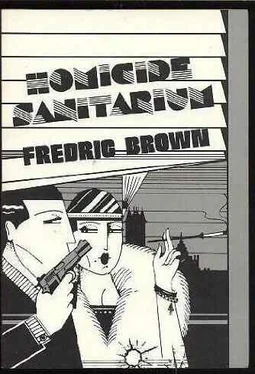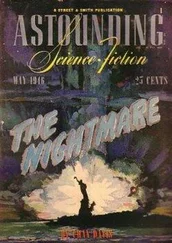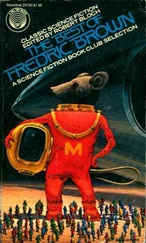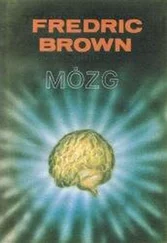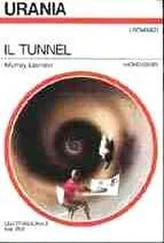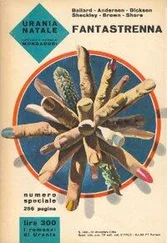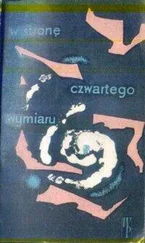Fredric Brown - Homicide Sanitarium
Здесь есть возможность читать онлайн «Fredric Brown - Homicide Sanitarium» весь текст электронной книги совершенно бесплатно (целиком полную версию без сокращений). В некоторых случаях можно слушать аудио, скачать через торрент в формате fb2 и присутствует краткое содержание. Год выпуска: 1985, ISBN: 1985, Издательство: D. McMillan Publications, Жанр: Детектив, на английском языке. Описание произведения, (предисловие) а так же отзывы посетителей доступны на портале библиотеки ЛибКат.
- Название:Homicide Sanitarium
- Автор:
- Издательство:D. McMillan Publications
- Жанр:
- Год:1985
- ISBN:9780960998623
- Рейтинг книги:5 / 5. Голосов: 1
-
Избранное:Добавить в избранное
- Отзывы:
-
Ваша оценка:
- 100
- 1
- 2
- 3
- 4
- 5
Homicide Sanitarium: краткое содержание, описание и аннотация
Предлагаем к чтению аннотацию, описание, краткое содержание или предисловие (зависит от того, что написал сам автор книги «Homicide Sanitarium»). Если вы не нашли необходимую информацию о книге — напишите в комментариях, мы постараемся отыскать её.
Homicide Sanitarium — читать онлайн бесплатно полную книгу (весь текст) целиком
Ниже представлен текст книги, разбитый по страницам. Система сохранения места последней прочитанной страницы, позволяет с удобством читать онлайн бесплатно книгу «Homicide Sanitarium», без необходимости каждый раз заново искать на чём Вы остановились. Поставьте закладку, и сможете в любой момент перейти на страницу, на которой закончили чтение.
Интервал:
Закладка:
HOMICIDE SANITARIUM
Fredric Brown
in The
Detective Pulps
VOLUME 1
Introduction
by Bill Pronzini
The pulps, those gaudy-covered, cheap-paper, jack-of-all-fiction magazines that flourished during the first half of this century, provided a training ground for dozens of writers who eventually went on to bigger and better literary endeavors.
William E. Barrett, Theodore Dreiser, Sinclair Lewis, Horace McCoy, and Tennessee Williams wrote for them. So did Isaac Asimov, Ray Bradbury, Max Brand, Edgar Rice Burroughs, Zane Grey, Robert Heinlein, John Jakes, Louis L'Amour. And so did John Dickson Carr, Raymond Chandler, Erie Stanley Gardner, Dashiell Hammett, John D. MacDonald, Rex Stout, Cornell Woolrich--and Fredric Brown.
Brown was working as a proofreader for the Milwaukee Journal when he sold his first pulp story, "The Moon for a Nickel," to Street & Smith's Detective Story Magazine in 1938. This first taste of success was all the impetus he needed; before long he was selling regularly to a wide variety of pulp markets--crime stories to Clues, Detective Fiction Weekly, Detective Tales, Dime Mystery, Phantom Detective, Popular Detective, The Shadow, Strange Detective Mysteries, Ten Detective Aces, Thrilling Mystery; science fiction and fantasy stories in Astounding, Captain Future, Planet Stories, Thrilling Wonder Stories, Unknown, Weird Tales; even a couple of westerns to Western Short Stories. By 1948, his success in the pulp marketplace--coupled with the novels he had begun to publish in 1947 with The Fabulous Clipjoint, winner of the Mystery Writers of America Edgar as Best First Novel of that year--allowed him to devote his full time to writing.
He continued to sell to the pulps until their paperback original- and TV-induced demise in the early 50s--in all, publishing more than 150 stories in that voracious medium. Although fantasy and science fiction were his professed first love, the bulk of his output was in the mystery and detective field: upward of 100 stories. Some three-score of these were reprinted in his two hardcover mystery collections, Mostly Murder (1953) and The Shaggy Dog and Other Murders (1963). Several others--novelettes and novellas, for the most part--were later expanded or combined into novels. For instance, "The Santa Claus Murders" (Detective Story, October 1942) became Murder Can Be Fun (1948); "The Gibbering Night" (Detective Tales, July 1944) and "The Jabberwocky Murders" (Thrilling Mystery, Summer 1944) were combined into Night of the Jabberwock (1950); "Compliments of a Fiend" (Thrilling Detective, July 1945) was developed into 1949's The Bloody Moonlight (not into the 1950 novel also called Compliments of a Fiend, as some people suppose); and "Obit for Obie" (Mystery Book, October 1946) became The Deep End (1952).
But there are still more than 60 of Fredric Brown's pulp stories that have never been reprinted anywhere since their original magazine publications, or have only appeared in obscure anthologies or in digest crime magazines in the 50s and 60s.
To be sure, some of these stories are badly dated; and others, written hurriedly for money and under deadline pressure, are of mediocre or poor quality. Still, more than a few have merit, some considerably so. Minor Brown they may be, but they are nonetheless deserving of disinterment from their crumbling pulp tombs for the enjoyment of modern readers. Seven of these comprise this longoverdue book--the first but not, Dennis McMillan and I both hope, the last such collection.
My personal favorite here is "The Spherical Ghoul" (Thrilling Mystery, January 1943), which has a typically wild and wonderful Brown plot--its ingredients include a morgue at night, a horribly disfigured corpse, mayhem aplenty, and a classic locked-room mystery--and one of the cleverest (if outrageous) central gimmicks you're likely to come across anywhere. It puzzles me why Brown failed to include it in either of his own collections. And why no one (except The Saint Magazine in 1962, and yours truly in a 1981 horror anthology called The Arbor House Necropolis) has ever bothered to reprint it.
The lead story, "Red-Hot and Hunted" (Detective Tales, November 1948), is also very good Brown. It utilizes one of his favorite themes: the madness, or apparent madness, of either the protagonist or another main character--in this case, a stage actor named Wayne Dixon who may or may not have murdered his wife. The hallmark of any Brown story, aside from its unusual plot, is the maintenance of a high level of suspense; "Red-Hot and Hunted" has this quality in abundance.
"The Cat from Siam" (Popular Detective, September 1949) is another variation on the madness theme, with that same quality of suspense and a beautifully eerie tone. What Brown does with the Siamese cat of the title, and with such simple devices as a chess game, some gunshots in the dark, and a new kind of rats-bane, should provide a frisson or two.
"Listen to the Mocking Bird" (G-Man Detective, November 1941) makes use--as does another of my favorite Brown shorts, "Whistler's Murder" (reprinted in The Shaggy Dog and Other Murders)-- of old Vaudevillean characters; in this story, a mimic who specializes in bird calls. Its plot is both solidly plausible and satisfying, making the story one of his pre-World War II best.
The flute was Fred Brown's favorite musical instrument; he played it often if not well, for pleasure and relaxation. His love for the flute and for music in general are evident in "Suite for Flute and Tommy-gun" (Detective Story, June 1942). Again, a clever plot and an unusual blending of its various components make this an above-average story.
"The Moon for a Nickel" is hardly one of Brown's strongest yarns, but the fact that it was his first published fiction makes it important from the historical point of view. It also demonstrates that from the very first, he had all the tools that would later make him so successful--the fast-paced storyline, the wry style, the eye, ear, and feel for the unusual.
Brown wrote relatively few stories featuring private detectives--prior, that is, to his creation of the team of Ed and Am Hunter in The Fabulous Clipjoint.
"Homicide Sanitarium" ( Thrilling Detective, May 1944) is one of those few, and another neglected gem. Any number of fictional private eyes have taken undercover jobs in sanitariums, but none for quite the same reason as pint-sized and newly married Eddie Anderson: he's hunting an escaped homicidal maniac, and what better place for a lunatic to hide, after all, than in a private loony-bin that allows its patients to come and go as they please? The plot twists are numerous and baffling, and the delightful surprise Brown springs on the final page is surprising indeed.
Fredric Brown was one of the best storytellers of his time. These seven vintage tales from his pulp years may be minor, as noted earlier, but that doesn't diminish their value in any way. They're pure entertainment, from a writer who understood the meaning of that word as well as--if not better than--any pro-ducer of popular culture.
What more could a reader ask?
Bill Pronzini San Francisco, California, January 1984Red-Hot & Hunted
Murder Role
My back was pushing against the door, but the doorway was shallow and the yellow glow of the street light across the way caught me full in the face.
Adrian Carr saw me; he stopped theatrically. Everything Adrian Carr does he does theatrically. Adrian has never spoken a line on stage, but he has more ham in him than any odd dozen of the actors he hires. And more money than the hundred most successful actors in the business, if there are that many successful actors on the legitimate stage.
Читать дальшеИнтервал:
Закладка:
Похожие книги на «Homicide Sanitarium»
Представляем Вашему вниманию похожие книги на «Homicide Sanitarium» списком для выбора. Мы отобрали схожую по названию и смыслу литературу в надежде предоставить читателям больше вариантов отыскать новые, интересные, ещё непрочитанные произведения.
Обсуждение, отзывы о книге «Homicide Sanitarium» и просто собственные мнения читателей. Оставьте ваши комментарии, напишите, что Вы думаете о произведении, его смысле или главных героях. Укажите что конкретно понравилось, а что нет, и почему Вы так считаете.
